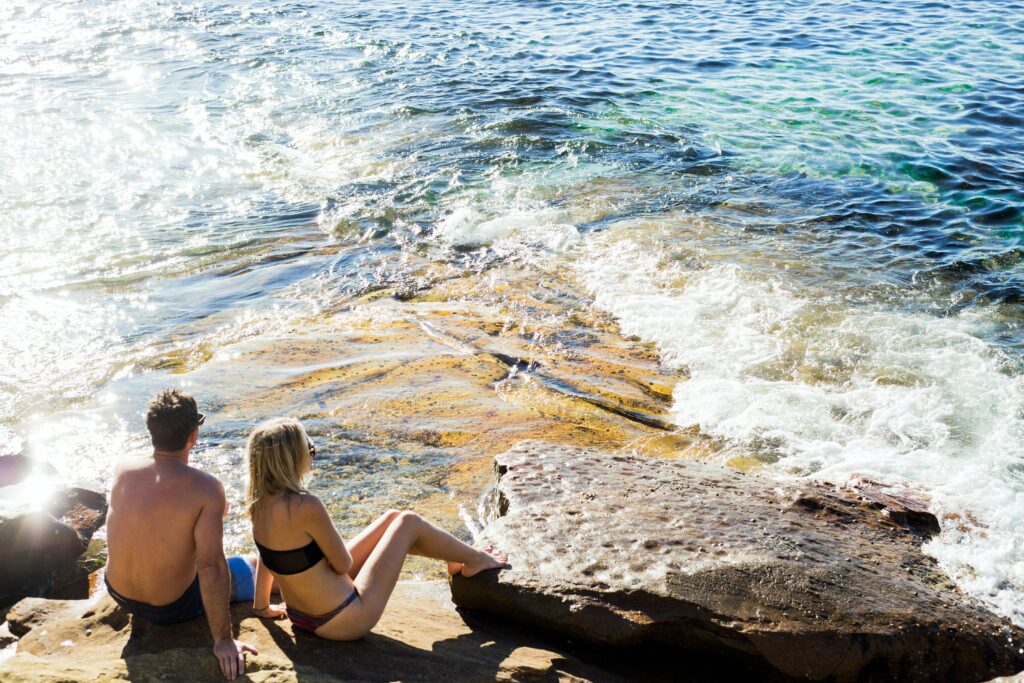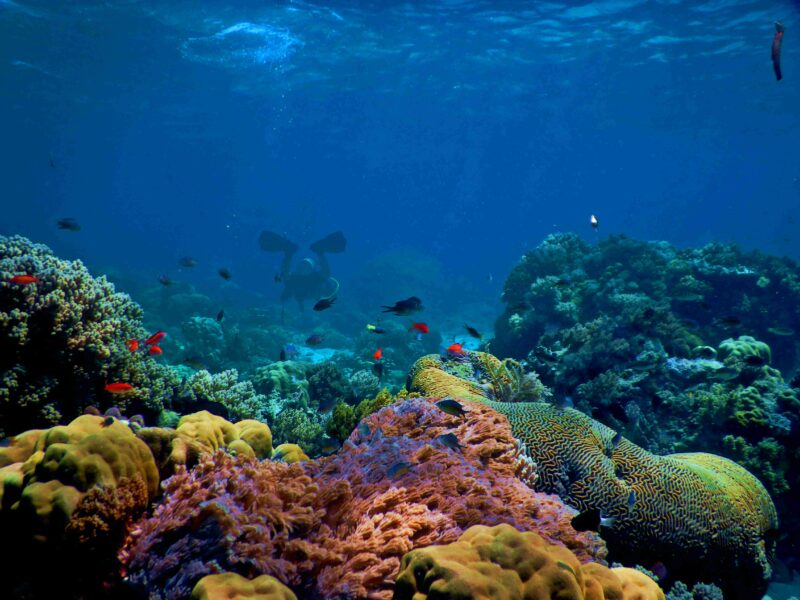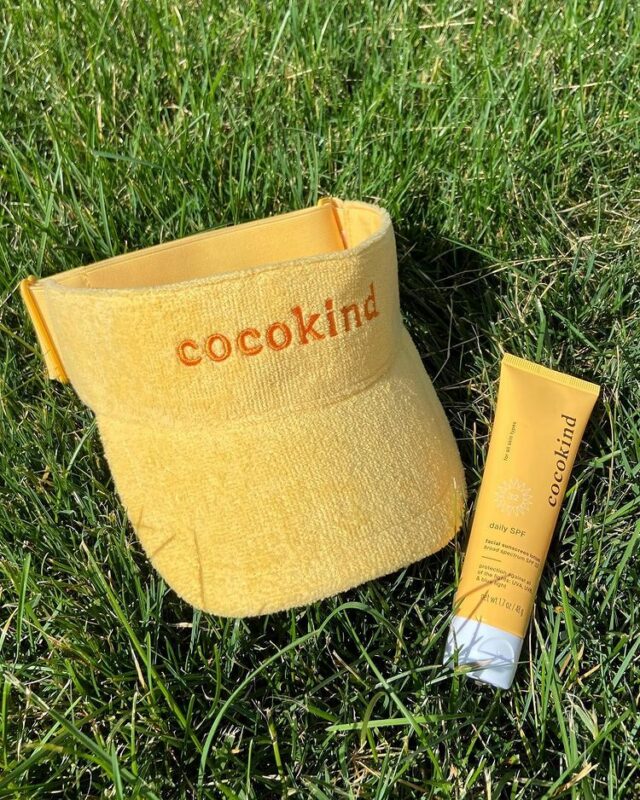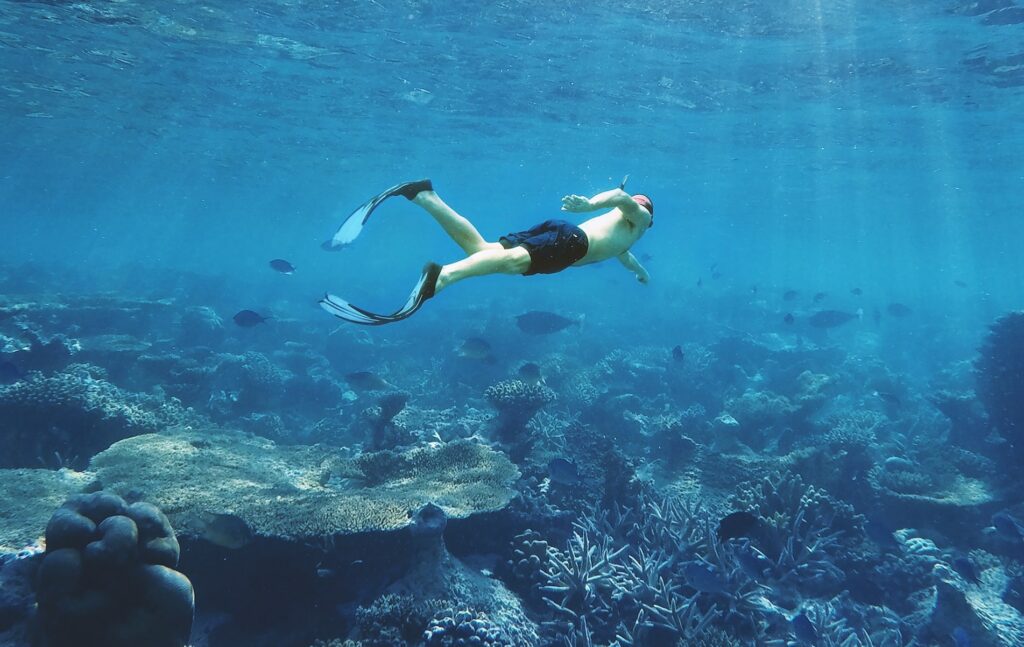Choosing an environmentally friendly, reef safe sunscreen is essential for protecting both your skin and our planet. But what constitutes reef safe sunscreen? Companies are rushing to market their products as ocean-friendly, but there is still no regulation from the FDA on what qualifies, leaving room for greenwashing. That’s why we’ve put together this helpful guide to picking out the best reef-safe sunscreen so you can feel confident while you’re protecting the planet + your skin.
What is Reef Safe Sunscreen?

Reef-safe sunscreen is sunscreen without chemicals and particles that are harmful to the ocean.
This definition changes over time as more research is being done every day to better understand the ways our actions impact the environment. The most harmful common ingredients in sunscreens are oxybenzone and octinoxate. When these two UV-blocking chemicals are left out a product is considered to be reef safe. They’re also two of the leading chemicals associated with coral bleaching.
Look for the presence of physical UVA and UVB blockers. Many sunscreens use chemical blockers to prevent sunburn and skin damage, causing damage to the ocean. Zinc oxide is one of the most popular physical blockers you’ll see in reef-safe sunscreen. Together the UVA and UVB blockers create a shield that blocks the harmful rays from being absorbed into your skin. This difference keeps both the ocean and your skin more protected.
It’s important to not only pay attention to the types of ingredients but also the size of the ingredients. When possible, opt for the micro-sized mineral sunscreens. This will help avoid nanoparticles, which are toxic in large amounts. Choosing a lotion sunscreen is better since it prevents you from inhaling harmful chemicals. As with any product, picking a sunscreen that comes without single-use plastic packaging is the most sustainable. There are many options today that feature packaging made out of recycled material, cardboard, or aluminum.
Sunscreen Ingredients to Avoid
Until there’s a universal definition of reef-friendly sunscreen, this section will help make the knowledge you need to make an informed decision more accessible. This helpful list contains chemicals that you should definitely AVOID! If you see these listed on the packaging, it’s not reef-safe:
- Oxybenzone
- Homosalate
- Octocrylene
- Octinoxate
- Parabens
- Petrolatum, mineral oil
- 4-methylbenzylidene camphor
- PABA
- Microplastic, such as “exfoliating beads”
- Triclosan
- Titanium Dioxide
- Any nanoparticles or “nano-sized” zinc or titanium
Why is Reef Safe Sunscreen Important?

Reef-safe sunscreen is important not only for tropical destinations but also for your everyday life. Skincare products wash down the drain and end up in the water supply no matter where you live. Our oceans make up a majority of our planet & are home to incredible ecosystems. Coral reefs are some of the most biodiverse of those ecosystems. While these spaces are important for maintaining life they’re also quite fragile. One of the main stressors on coral reefs are the chemicals in sunscreens. People don’t often think their choice of sunscreen is very important – but think of how many people use it around the world!
The chemicals we mentioned earlier can lead to coral death and bleaching. If you don’t know what coral bleaching is, it’s a phenomenon in which the coral loses its color and becomes more vulnerable to disease and stress. To make the situation worse, these chemicals have also been found to damage the coral’s ability to reproduce.
Besides affecting coral, sunscreens that contain petrolatum, or mineral oil, have been found to be harmful to waterfowl & aquatic life. Titanium Dioxide is another harmful chemical that isn’t biodegradable and turns into hydrogen peroxide when it meets warm seawater, which is detrimental to all sea life. It’s important to pay attention to the ingredient list, because sometimes titanium dioxide acts as the physical blocker used in natural sunscreen – in order for it to be reef safe, choose one with zinc instead!
Recently different parts of the country have begun passing legislation regarding sunscreen and the environment. Hawaii has banned the sale of any sunscreen with the coral-harming chemicals oxybenzone and octinoxate as ingredients. Key West banned the same harmful sunscreens in early 2019. The US Virgin Islands are another region to pass legislation… where do you think will be next?
Best Reef Safe Sunscreens

While it can be hard to find which sunscreen to be confident in – we’ve done all the hard work for you! If you’re looking for an option without plastic packaging, our go-to is the Raw Elements Face & Body Certified Natural Sunscreen.
Since everybody’s looking for different things in their biodegradable sunscreens, we’ve decided to include a list of the brands we’ve found that are actually ocean-friendly. Check them out:
- Cocokind Daily SPF
- Raw Elements Certified Natural Sunscreen
- Manda Organic Sun Paste
- Kokua Sun Care Hawaiian Natural Zinc Sunscreen
- Loving Naturals Clear Body All-natural Sunscreen
- Babo Botanicals Clear Zinc Lotion
- Raw Love All-natural Mineral Sunscreen
- Mama Kuleana Waterproof Reef-safe Sunscreen
- Badger Unscented Sunscreen Cream
- Black Girl Sunscreen’s Moisturizing Sunscreen Lotion
- Supergoop Unseen Sunscreen
We hope you’ve found this article about reef-safe sunscreen to be educational. While the effects of climate change can feel overwhelming, making sustainable swaps in your lifestyle is a step in the right direction. If you’ve got any questions, connect with us on Instagram!




























